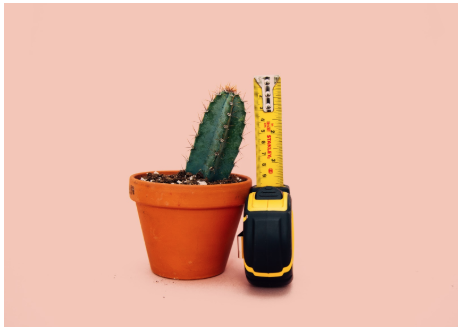What is Data and Why Should I Care
Last modified: September 26, 2019 • Reading Time: 5 minutes
Community Story
When I was little, I went to a friends house for a play-date schedule by our mothers. As we were running around, playing with Nerf guns and foam swords, I stumbled upon a mysterious relic that I’d never seen before. Etched on the frame of the door were dozens of mysterious markings. Upon closer inspection I realized they were pencil marks - squiggly horizontal lines followed by a few letters and numbers. I asked my pal what I was looking at, to which he proudly replied: “It’s the height of my family!”
I stared at the wall in wonder, realizing that the shortest marking on the wall was an indicator of the height of my beloved friend when he was only 5 years old. He was tiny! I then tilted my head back to see the highest marking, way above both our heads. “That’s my cousin. She’s a giant.”
While it might just seem like a cute way to build family memories, rituals like measuring yourself at regular intervals is also a way to connect the narratives of your past to your present.
How Tall Were You As A Kid?
If I asked you right now whether you would consider yourself a tall kid when you were growing up, you’d probably consider a whole bunch of things before answering.
What do I mean by tall?
Do you mean a specific age, or over my entire childhood?
Tall compared to my classmates, or the entire population of kids?
While it might seem like a simple question on the surface, it’s actually an impossibly difficult question to accurately answer without knowing more.
But, if your parents had a soft spot for tradition (and were willing to scuff up their walls), then you could tell me exactly how tall you were at a given time! You could also tell me the exact year that your growth spurt occurred, rocketing you into the “tall kid” category.
Those pencil scratches on the wall are observations that don’t have any value, until a question is asked that they can help solve.
Information is only valuable if we’re asking the right questions. Data is no different. It can be extremely useful by telling us how healthy our business is, what our customers are thinking, or where production bottlenecks are occurring. But the answers to those questions can only happen if we proactively do two things:
- We’ve taken the time to record observations of our surroundings.
- We ask a specific question to get a specific answer.
That’s all there is to it!
If you are fine with general answers, like: “Well, I was the third tallest in first grade, just behind Tanya, but then she moved to Washington which made me second tallest after Mariah…” then don’t worry about collecting any data.
But if you need your answers to be a little more solid than that, then you’ll need to begin collecting data and asking the right questions.
Here are my top three tips if you’re interested in taking the first step on your data journey, but are unsure of where to start:

1. Itch your own scratch
You know your needs better than anyone else. If you need a certain question answered on a daily basis, but find it difficult to get straight answers, begin with that. Ask yourself “What do you need to know in order to make a decision?”.
Pro Tip: Keep it super simple to begin. You might have a thousand questions you need answering, but start with just one. This will help you to understand the anatomy of an answer and be able to replicate the process more effectively in the future.

2. Use human units
What I mean by this is to make the answer to your question as humanistic as possible. This means rounding answers to the nearest whole, use time frames that we can comprehend (like number of times per hour), and don’t worry about being too specific. Pretend like you’re answering your closest friend when they ask you a question. This will help you get comfortable with making judgement calls with data as a partner, rather than relying completely on data to give you the answer.
Pro Tip: When in doubt, think about your five senses (hearing, smelling, seeing, touching, tasting). What information from each of those is necessary to make a decisions and how should it be measured?
3. Apply Context
Our brains work better when the information we’re presented realties to our world around us. Use techniques like comparison, over time, or “equivalent to” as ways to help yourself see your answer clearly. The statement “I grew 5 cm taller since I was last measured” has a very different meaning if you’re 10 or 50 years old.
Pro Tip: You know you’ve applied enough context to a question if the answer can be said in one sentence. Ex. I am 166 cm tall as of September 5, 2019.
Keeping those tips in mind, you’re now ready to get out and begin playing around with data. Don’t worry if it gets confusing, practice will make perfect over time. Much like learning to read, it takes practice to begin working with data. Don’t forget to celebrate the small wins and don’t get discouraged if you get confused. I’m only a tweet away @stew_hillhouse if you’ve got any questions.
Stewart Hillhouse is a contributing writer to Data School. He’s the co-founder of GoDo, a data experience studio. To get more, check out Connect With Data, his blog helping to demystify the complexities of data.
Written by:
Stewart Hillhouse
Reviewed by:
Matt David


